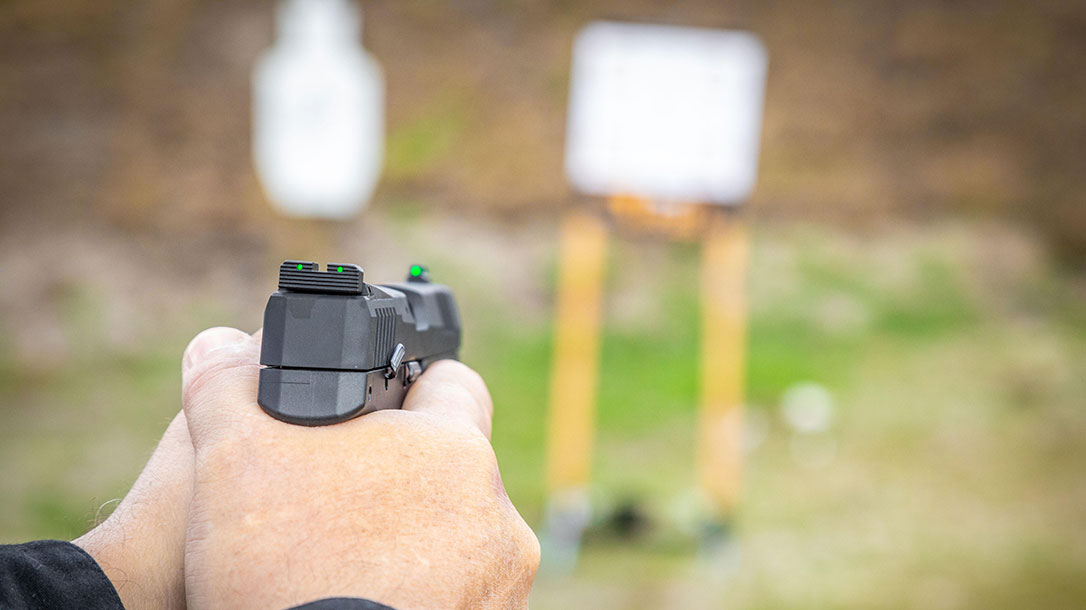I mean, it looks simple enough. You simply grab the gun in your hand, point it at the target, and start blasting. At least, that’s how Hollywood would have you believe it works. However, there is more to shooting a pistol accurately than movies portray, and these tips will help get you there.
Pistol Shooting 101: Running Your Gun Safely and Correctly
The truth is that it’s hard to be accurate right away with guns. This is especially true with the handgun. It is relatively small, with a short sight radius (distance between the front and rear sights). This can make accurate aiming a challenge.
Add to this the fact that most stock triggers require pressure equivalent to twice the weight of the gun to fire, and things get more challenging. However, with training and practice, you can master the handgun.
To help you get started, let’s look at the fundamentals of safely and correctly shooting a pistol.
Establishing the Proper Grip
First up, we have the grip. A good grip on the gun is critical if we are to enjoy any sort of accuracy. While there are several versions out there, the best grip will have the barrel in line with the bones in your forearm.
The web of your shooting hand should be high on the back of the gun and fully under the back strap. In addition, your thumb should be pointing down the slide.
The support side hand will have a firmer grip. Your fingers will wrap over the top of your shooting hand and your thumb will be pointed down the slide as well. The thumb from your strong side hand will now rest on top of the muscle of your support side hand.
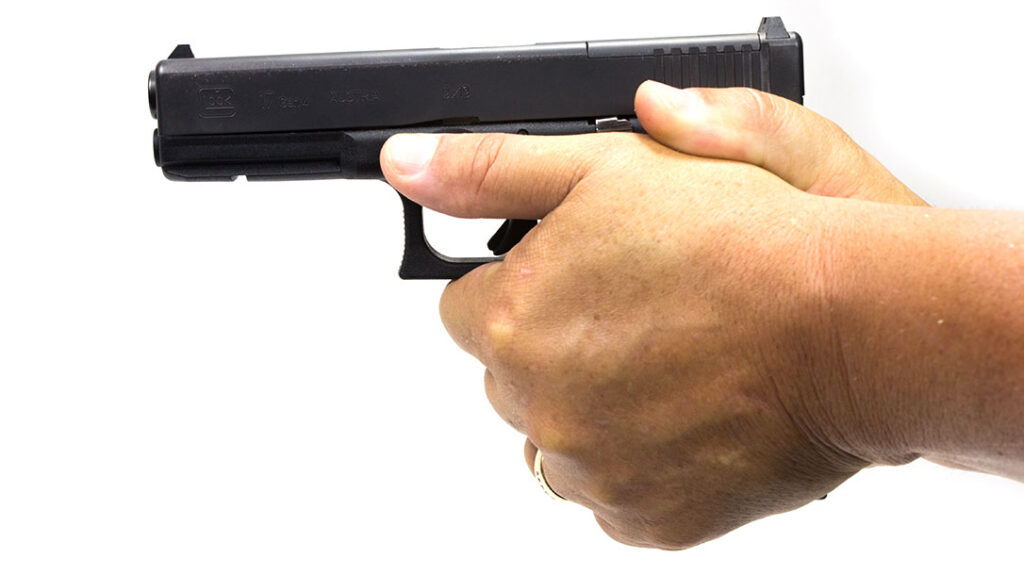
This “thumbs forward” grip allows the large muscle of your thumb to settle up against the gun. This in turn will create a full 360° grip with no weak spots or openings.
At this point, you want to make sure the gun fits your hands. If you can barely get your paws around the gun, you should consider doing some pistol shopping. A good grip is one of the cornerstones of accurate shooting.
Choosing the Right Shooting Stance
Now, we must practice standing. Like grip, there are numerous stances you can use.
The stance I teach to new shooters is simply what I call a fighting stance. This is the same stance you would take if someone pushed you to the point where you were going to have to fight them.
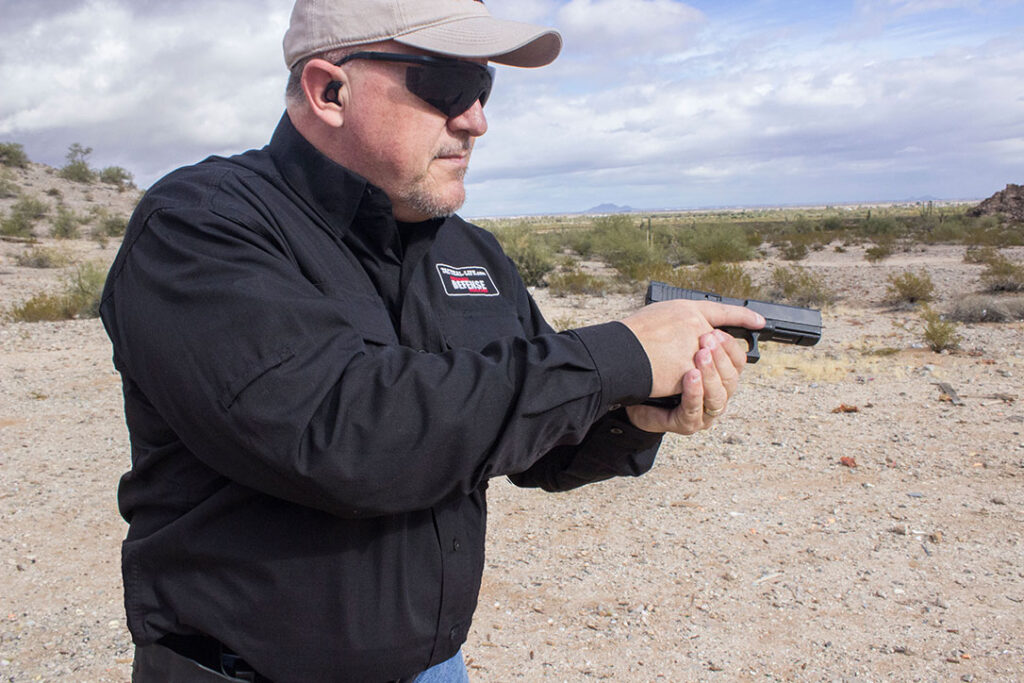
Your support side foot is forward, and your strong side foot is back about shoulder width. You are bladed just slightly away from the target and will extend your arms forward with the gun in hand.
You should be extended but not completely locked out. Likewise, your shoulders should be engaged but not wrapped up around your ears. Lean just slightly forward onto the balls of your feet and get ready to fight.
This is a strong position that will allow you to fire accurate shots.
Sight Picture and Sight Alignment
Now, for our most technical skills—sight picture and sight alignment. However, the correct sight picture for handgun shooting can seem counterintuitive. While we generally want to look at our target, it is important that we focus primarily on the front sight.
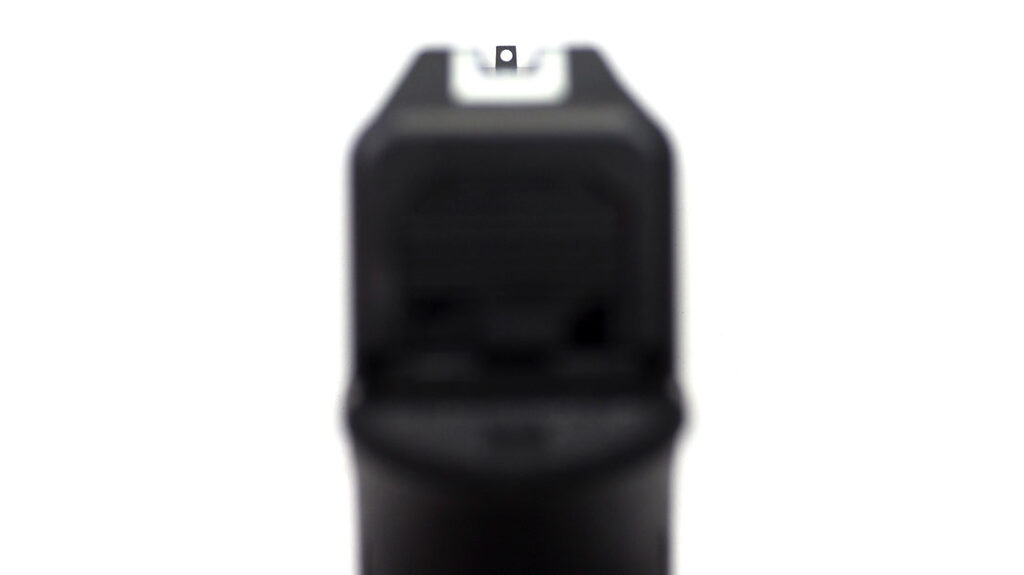
The correct alignment will have the front sight positioned in the middle of the rear sight notch. You want to ensure there is an equal light space on each side. Likewise, the top of the front sight will be level with the surface of the rear sight.
This orientation of our sights will allow us to hit our target consistently and accurately.
Proper Trigger Control
Pressing the trigger is one of the most challenging parts of accurate shooting. As I mentioned earlier, it can sometimes take over five pounds of pressure to run a stock trigger. This can translate into a little extra motion in the gun and possibly even a large dip in the muzzle.
Finger placement on the trigger is important. With semi-auto pistols, the trigger should rest on the middle of the last pad of your index finger. The preferred area is right in the middle of the pad, where your fingerprint is located.
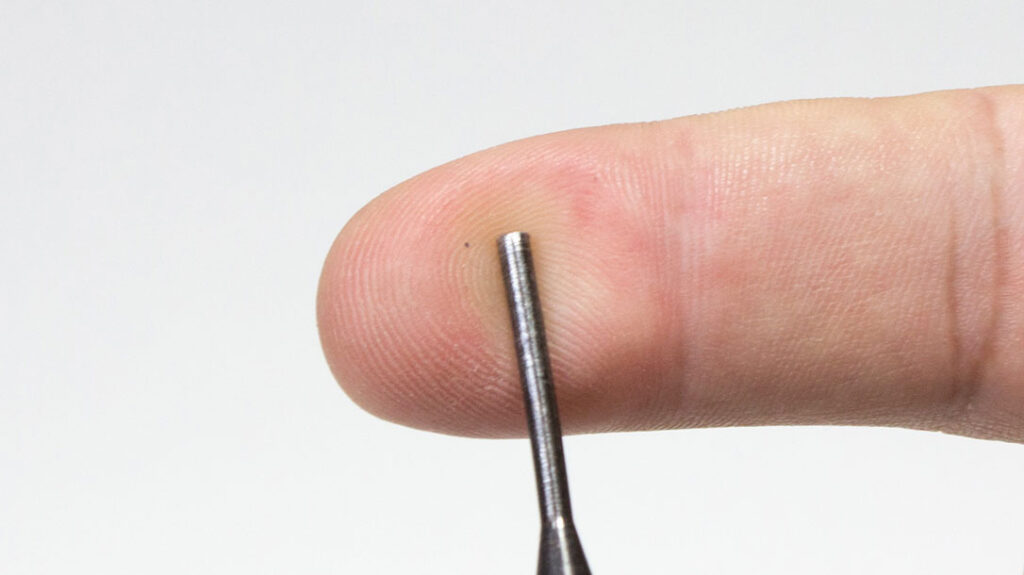
We want a smooth and continuous motion when we press the trigger. If you rush or jerk the trigger at the end, your shots will miss, regardless of how good your sight work is. We are looking for what is called a “surprise break.” This simply means that the gun fires when you have completed a smooth trigger press as opposed to an effort to “make” the gunfire.
We will also want to let the trigger reset now so we can shoot again. As the gun fires, we will slightly release the tension on the trigger and allow it to move forward. It will travel a fairly short distance, at which point you will feel and possibly even hear a click. The trigger is now reset and ready to go.
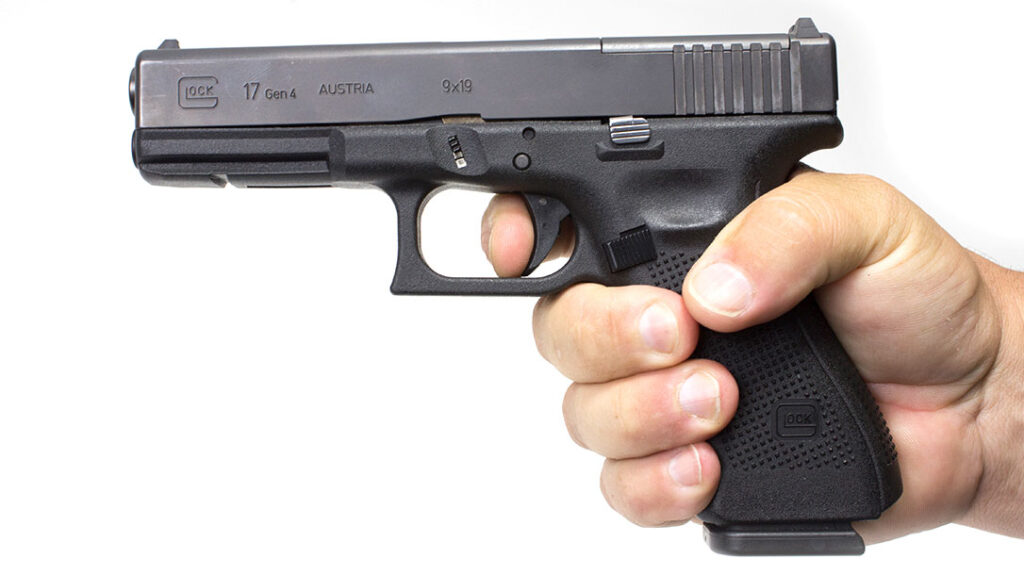
Do your best not to take your finger off the trigger and allow it to travel all the way forward. This makes for slow and generally inaccurate shooting with stock triggers.
I encourage you to get as much safe dry practice as possible to get comfortable with your trigger.
Parting Shots
Shooting a handgun can be a little frustrating at first. Be patient with yourself and judge yourself based on your own performance and improvement. It may take some time, but with effort, you can master the handgun.
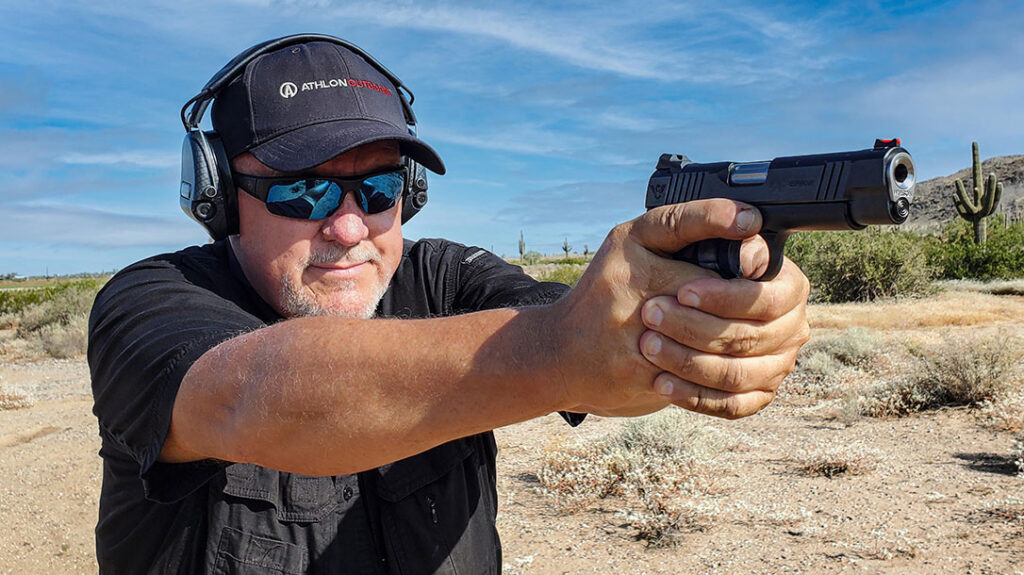


Didn’t find what you were looking for?
Read the full article here

